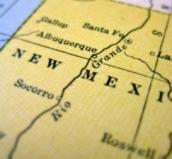In July of 1945, the U.S. government tested the first atomic weapon in south-central New Mexico. The test was code-named Trinity.
The National Cancer Institute (NCI) carried out a study to quantitatively estimate the range of possible radiation-related cancer cases in New Mexico that may be related to the nuclear test.
To accomplish this task, the research team used published data on radioactive fallout from the test as well as descriptions of the typical diet and lifestyle of people living in New Mexico in 1945. These data were drawn from the published literature and collected through targeted interviews among senior residents in New Mexico.
Information for Journalists
To request an interview with a DCEG investigator, contact the NCI Press Office:
E-mail:
ncipressofficers@mail.nih.gov
Phone: 240-760-6600
The NCI conducted in-depth interviews to ascertain the typical diet of Native American, Hispanic, and White populations living in New Mexico in the mid-1940s.
These interviews were essential for developing estimates of low and intermediate radiation doses resulting from Trinity.
To determine how best to collect these data, NCI investigators engaged in discussions with academic experts in the lifestyles of Native American and Hispanic communities in the 1940s, as well as advocates and local community leaders.
NCI partnered with a key community group to facilitate the identification of elders who could contribute their historical knowledge regarding lifestyle and diet at the time of the Trinity test.
The investigators published their findings on September 1, 2020, in the journal Health Physics. These papers are free and open to the public.
Upon publication, NCI investigators held briefings to share study results with tribal communities, congressional staff, and local stakeholders. Watch lead investigator Dr. Steven Simon's (retired) presentation of the results.
The list of papers is as follows:
- Introduction to the Trinity Nuclear Test Collection of Papers
- Methods and Findings on Diet and Lifestyle Used to Support Estimation of Radiation Doses from Radioactive Fallout from the Trinity Nuclear Test (Dr. Nancy Potischman and colleagues)
- The Methodology Used to Assess Doses from the First Nuclear Weapons Test (Trinity) to the Populations of New Mexico (Dr. André Bouville and colleagues)
- Estimated Radiation Doses Received by New Mexico Residents from the 1945 Trinity Nuclear Test (Dr. Steven Simon and colleagues)
- Projected Cancer Risks to Residents of New Mexico from Exposure to Trinity Radioactive Fallout (Dr. Elizabeth Cahoon and colleagues)
- The Likelihood of Adverse Pregnancy Outcomes and Genetic Disease (Transgenerational Effects) from Exposure to Radioactive Fallout from the 1945 Trinity Atomic Bomb Test (Dr. John Boice)
- Accounting for Unfissioned Plutonium from the Trinity Atomic Bomb Test (Mr. Harold Beck and colleagues)
Read the Community Summary:
- Cancer Risk Projection Study for the Trinity Nuclear Test—Community Summary
- Hallazgos del estudio sobre el pronóstico de riesgo de cáncer por la lluvia radioactiva de la prueba nuclear Trinity
